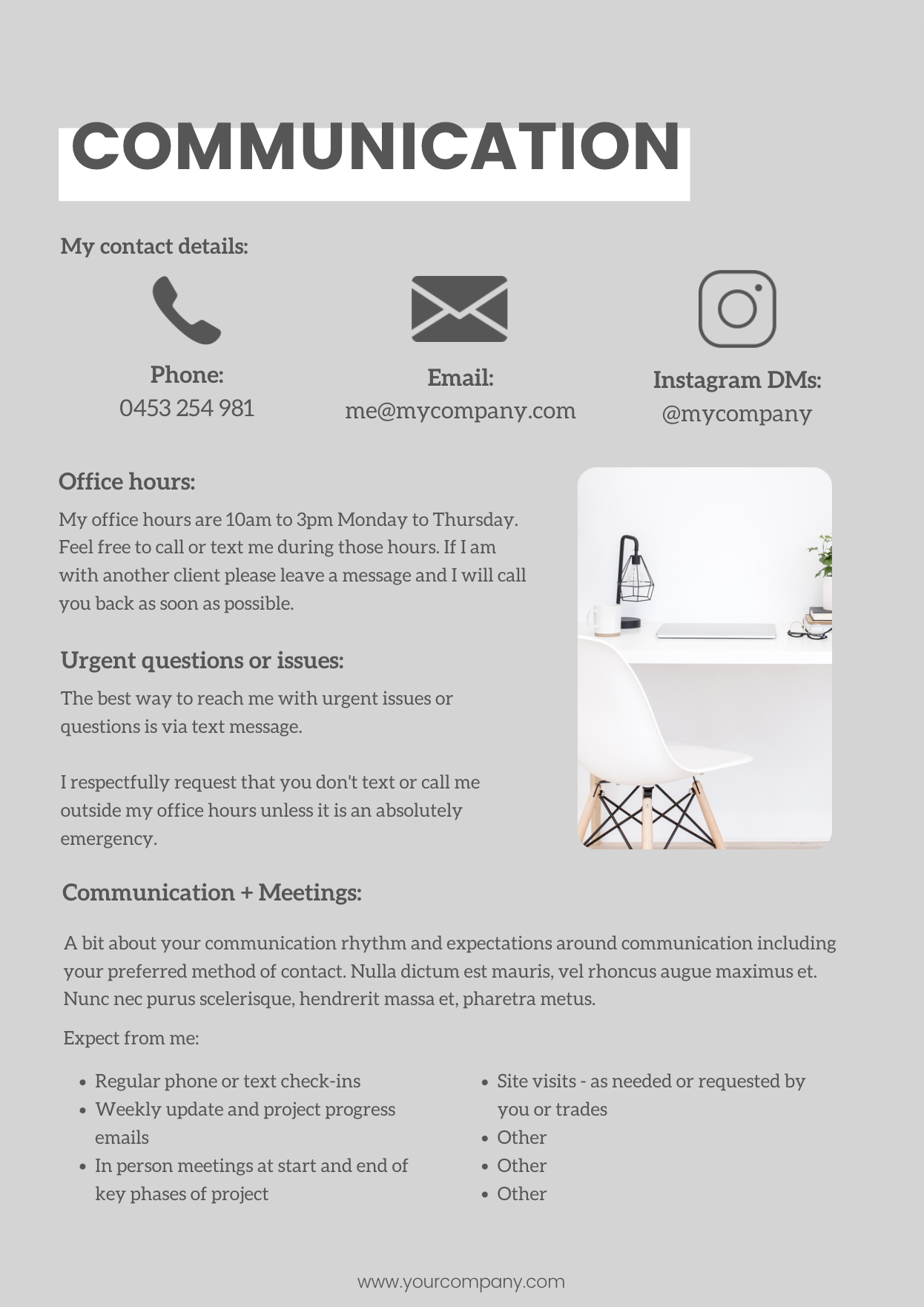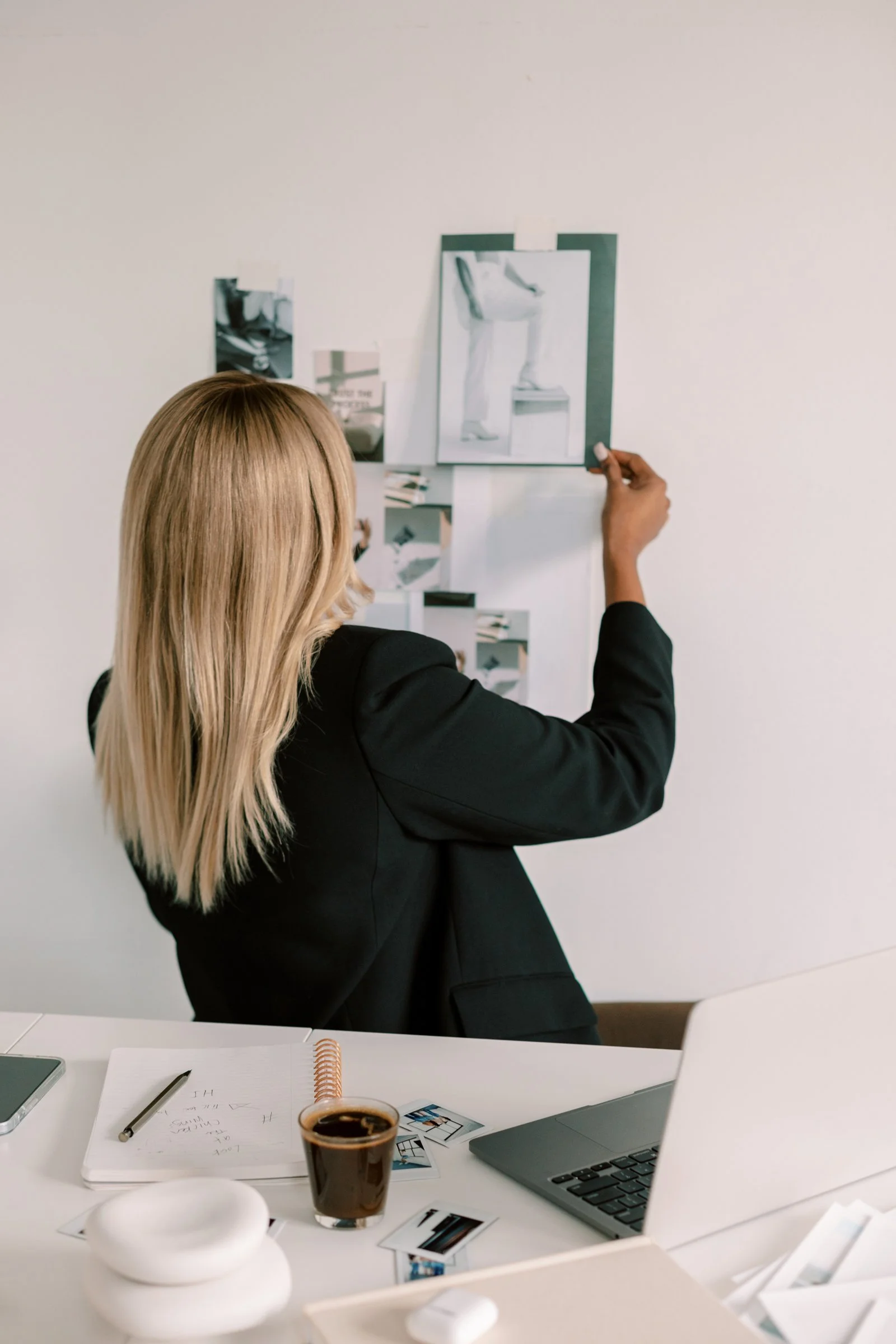How to create an amazing client experience: 5 tips for creatives
Finding clients is one of the things that most designers and architects find difficult.
They either tend to have too much work on the go or not enough and getting that balance right and having plenty of people in your sales pipeline can be tricky to achieve.
One of the easiest ways to find new clients is by word of mouth and for most good service-based businesses their word of mouth marketing is where the bulk of the new business comes from.
But what makes your existing clients tell their friends and family about you?
It’s not only the actual service that you deliver (which has to be excellent!) but it’s also about the experience that you provide them and the way you make them feel when they work with you.
For me, when working with design clients I wanted the process to be easy, enjoyable and stress free. For you it might be something different depending on what sort of work you do and what sort of clients you work with. But the most important thing is to actually be intentional about the experience you are offering your clients and think about the different steps along their journey of working with you and what you can do to improve or enhance that part of the journey for them.
Your client experience should be as much a part of your brand identity as your fonts and your logo. It’s all about how you want people to feel when they interact with your brand.
So here are five ideas for how to think about this and how to improve your customer experience.
1: Communication
This is probably the biggest and most important aspect of your customer’s experience.
The more you can keep your client informed and updated about what is happening, the smoother your project is likely to go with them.
Communication is important at all parts of the process. From how you onboard a new client to how you keep in touch to let them know about the progress on their project. And all of this should be thought out in advance and not just left to chance.
Here are some actionable ideas and questions for you to consider around how you communicate with your clients:
How to you onboard new clients?
Is there are process you walk them through that explains each step of the project, how to get in contact with you, what to expect and how you work (which is very important for managing client expectations and boundaries). Set your intentions for how you want to work together from the start so it is clear.
A client welcome pack is the best possible way of onboarding clients, setting expectations and making the process feel special for them.
Do you have a client onboarding survey?
This can be really helpful for capturing ideas and information prior to an initial design consultation (for example) as it helps you do some preparation and know what you should expect when you get to the consultation.
Get my Client Onboarding Questionnaire Template here.
How do you keep clients updated as they move through their project?
Do you have regular reporting (e.g. weekly updates), do you text or email or call (I always recommend a weekly project summary at least - and ideally do this in writing to make sure it’s all documented). What do you do if you need to get hold of a client urgently to resolve a question or issue that might arise? How do you deal with things when mistakes happen?
Get my Email Scripts Database Here
How quickly do you respond to clients?
Make sure they know what to expect so they aren’t left wondering if you got their email or not. I also suggest responding as fast as you can to paying clients - this shows them that you are on top of things and that they are important to you. I always outline my communication strategies in my Client Welcome Pack.
Here’s an example of what that might look like (below is a page from my client welcome pack template and can be completely customised to your business and branding in a few minutes).
How do you respond to questions from clients
Finally - what is your communication style? Are you warm, formal, friendly, informal? Set your intention in advance.
2: Surprise and delight
Another way to enhance your client experience is to ‘surprise and delight’.
This doesn’t need to be with expensive gifts (although it can be if you have revenue coming in and client’s that might expect or appreciate this) - it can simply be thoughtful surprises that keep you top of mind and enhance the relationship you have with your clients. But a word of warning - don’t do this because you feel you have to as it will feel that way - make sure you think of thoughtful surprises and ways to delight your clients that are meaningful to them and actually feel like you have made an effort.
Here are some ideas from things I have done in my own business:
take a small gift to your initial design consultation (e.g. when I had no money in my business this was a printed off version of one of my digital downloads presented in a folder - when my business grew and I had higher paying clients I bought some candles from a local handmade ceramics company and gave these as gifts)
give gifts at the completion of a project - for designers this is quite easy as it can be something extra to enhance how their house looks - e.g. lovely bunch of flowers, nice vase, candle, ornament, small artwork etc. A lovely fruit basket can also be a nice idea as well. Gifts for children in the house are also a lovely idea and often more well received than gifts for the clients themselves. I also always like to acknowledge special occasions like weddings, births of new babies and birthdays if I know them.
If you run more of an online business then think of what you might be able to send people in the mail to supplement their online work with you. For my online courses, for example, I have sent out surprise packs in the mail with special games, professionally printed workbooks plus also little treats like bags of jelly beans - just to add in a fun element. Who doesn’t love getting something fun in the mail that isn’t a bill!
Another thoughtful idea is to send a thank-you note at the end of a project. Make it the old-fashioned kind that is handwritten and send in a nice envelope via snail-mail! People love receiving things like this and the thoughtful effort will be recognised.
3: Avoid in-person discussions about money
There is nothing that detracts from client experience like having to have awkward conversations with you about how much things cost - especially when it comes to your fees.
I used to avoid this by making sure that all design consultations were paid for prior to meeting the client (I had a payment system on my website) and any discussion about fees moving forward for larger projects were put down in a written fee proposal, rather than discussing all of this in person.
This may not be the way you like to do things - but for me I always find it awkward having to pay for services where I have really enjoyed working with the person and then having that weird part of the process where I have to get out my credit card and work through all of that.
So where possible have all of that sorted out up front, or put down in a written proposal, in order to avoid that being part of the in-person experience.
4: Celebrate your clients’ successes and wins
Everyone loves being featured and made a fuss of.
If you’ve had a great experience working with a client then create this in to a case study by interviewing them, taking some photos or perhaps even creating a video that allows them to talk about the journey of working with you and what this has meant for them.
Capturing your clients’ transformations not only celebrates the client and the work you’ve done together but it’s also great social proof for your business. It shows what it is like to work with you and the results you are able to achieve for people.
5: Ask for feedback and always be improving
When you have finished working with a client ask them for feedback on what you did well and what could have been improved.
Prepare an online form (again Typeform is great for this) so they can feel they can be honest with their feedback. Their responses will be hugely helpful and should help inform how you can improve your product and service in the future. As part of the form ask them if they would be willing to share a testimonial about working with you - or better yet send them a link to Facebook and Google and ask them to complete the testimonials directly on those sites for you.
But make sure to pay attention to any negative feedback you get. Don’t be disheartened about negative aspects they may raise - use the information to improve what you are doing and make it even better for your next client!
Customer experience starts at the core of your company values and the way you behave yourself, how you show up for your clients and how you treat your employees. If you want your clients to have a great experience working with your business then you have to show this by example and it has to be inherent in the values you build in to your company.
To improve how you are working with your clients think about every single touch point they have along the journey of working with you - from when they first find you, to then reaching out to you, starting to work with you, paying to work with you and then completing their work with you.
How can each of these touch points be improved?
What will make them keep coming back or tell others about you?
Be intentional about the experience you offer your clients - don’t let this just be an accidental afterthought.
Courses and Templates for Designers and Architects
DO YOU WANT TO….
Improve your professionalism?
Find more clients?
Bring in more revenue?
Create better systems and processes?
Then check out my business courses and templates for designers and architects.
These courses and templates leave you with work done - not just a long list of things you need to do next. We have a really strong focus on taking action and getting things created that improve your business.
Enjoy the rest of your day!
Clare x










